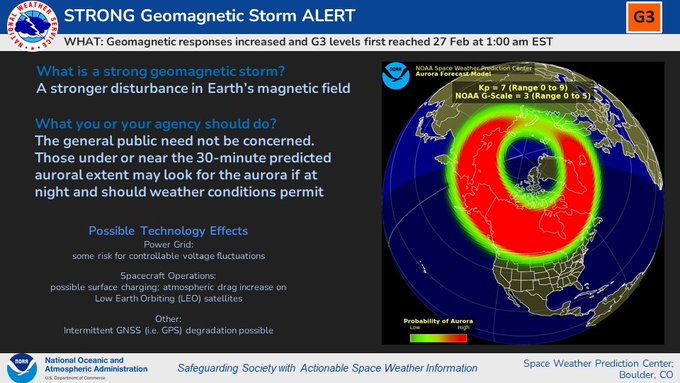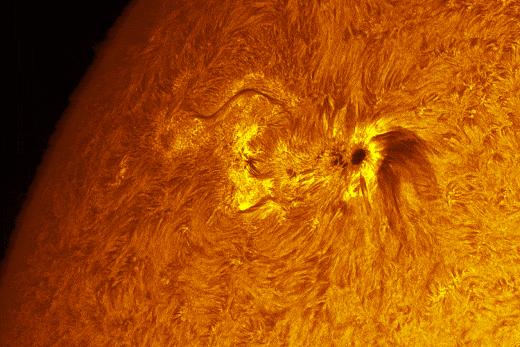XPan
The Living Force
Auroral Party Time
Geomagnetic storm levels G3 could be expected tonight !
for 27-28 Feb 2023
I was taken aback when the subway driver from which i took over the train, told me about an auroral outbreak over Stockholm (actually over entire Sweden). In hindsight, rather unusual that a train driver would inform me about that ME, excited... well, I didn't see a thing around 23.00 - 23.30. Neither did my husband from the balcony.
ME, excited... well, I didn't see a thing around 23.00 - 23.30. Neither did my husband from the balcony.
But at a facebook group which focuses around Northern Lights over Sweden, many photos of Northern lights where shown from many places around Sweden , both north and south - and quite many showing red auroras. After midnight... well, the sky turned overcast in Stockholm... so typical ! However, the prognosis calls for clear skies tonight...
However, the prognosis calls for clear skies tonight...
The image below, is from a place called Sundsvall, a city around 400 km north of Stockholm at the east coast.

However, tonight
from 27-28 of February 2023, a stronger impact is expected which could perhaps raise the geomagnetic activity to Storm levels G3
As of now (27 Feb 2023 • 07:14 UTC time)
The energy levels are very high - albeit based on a model / prognosis, not on factual observations.

Images from the Facebook group
"norrskenssverige" (Northern Lights Sweden)

 www.facebook.com
www.facebook.com
Lots of enthusiasm among the people in Sweden, with 1200+ comments which i believe corresponds to 600+ images, when unfolding the thread. Here are a few images.




Geomagnetic storm levels G3 could be expected tonight !
for 27-28 Feb 2023
I was taken aback when the subway driver from which i took over the train, told me about an auroral outbreak over Stockholm (actually over entire Sweden). In hindsight, rather unusual that a train driver would inform me about that
 ME, excited... well, I didn't see a thing around 23.00 - 23.30. Neither did my husband from the balcony.
ME, excited... well, I didn't see a thing around 23.00 - 23.30. Neither did my husband from the balcony.
But at a facebook group which focuses around Northern Lights over Sweden, many photos of Northern lights where shown from many places around Sweden , both north and south - and quite many showing red auroras. After midnight... well, the sky turned overcast in Stockholm... so typical !
 However, the prognosis calls for clear skies tonight...
However, the prognosis calls for clear skies tonight...The image below, is from a place called Sundsvall, a city around 400 km north of Stockholm at the east coast.
However, tonight
from 27-28 of February 2023, a stronger impact is expected which could perhaps raise the geomagnetic activity to Storm levels G3
As of now (27 Feb 2023 • 07:14 UTC time)
The energy levels are very high - albeit based on a model / prognosis, not on factual observations.
Images from the Facebook group
"norrskenssverige" (Northern Lights Sweden)

Norrsken
Norrsken. Gefällt 140.122 Mal · 8.007 Personen sprechen darüber. Störst i Sverige på norrsken! Gilla sidan och håll koll på när norrskenet visar sig hos just dig. Vill du supporta? Prenumera på...
 www.facebook.com
www.facebook.com
Lots of enthusiasm among the people in Sweden, with 1200+ comments which i believe corresponds to 600+ images, when unfolding the thread. Here are a few images.



